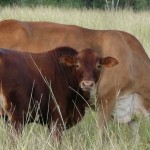 A new blueprint that potentially could be used for sustainable beef production in New Zealand has recently been brought into reality in Brazil and is being trialled in tropical northern Australia. However, its usefulness in temperate zones as a sole certification stamp is being questioned by one sustainability expert.
A new blueprint that potentially could be used for sustainable beef production in New Zealand has recently been brought into reality in Brazil and is being trialled in tropical northern Australia. However, its usefulness in temperate zones as a sole certification stamp is being questioned by one sustainability expert.
A group of four cattle ranches in Brazil, Fazenda São Marcelo Ltda, has just been announced as the first to earn Rainforest Alliance certification under a new standard – Standard for Sustainable Cattle Production Systems – developed and first published in July 2010 by the Sustainable Agriculture Network (SAN).
The ranches all met a rigorous set of standards that promote the humane treatment of livestock, the conservation of natural resources and the rights and well-being of workers. The standards were developed by SAN in response to the vast destruction of rainforest that results from cattle farming. IMAFLORA – the SAN representative in Brazil – carried out the certification.
According to Amaldo Eljinsk, chief executive of Grupo JD which manages the enterprise, the standards support the company’s values and management approach, helping it add value to its products, stay ahead of trends and attract buyers.
IMAFLORA is promoting the cattle certification programme in Brazil through its work with other local non-governmental organisations (NGOs, including Amigos da Terra), government agencies and international NGOs (including the National Wildlife Federation).
The current standard covers a summary of the principle of an integrated cattle management system, sustainable range and pasture management, animal welfare, reducing the carbon footprint and additional environmental requirements.
Input from sustainable standards expert Kevin O’Grady of Pinnacle Consulting, in the early stages of the standard, enabled the change of rules to allow the use of natural hormone replacement and de-horning. Since that time, O’Grady, who previously worked in the New Zealand meat industry, has been involved with the development of the standard and its trials in Northern Australia. He has been looking at the feasibility of extending it into temperate regions such as other parts of Australia and New Zealand.
“The way Rainforest Alliance works is that specific clients, such as McDonald’s in the specific case of South America, adopt the standard and suppliers then have to follow it,” he explains.
However, it would take a lot to adapt the standard for temperate zones and some of the issues for tropical farming , like tree cover and protecting livestock from predators, are not relevant, he says.
O’Grady also questions the advantage of this sort of standard for the New Zealand meat industry. “Many customers’ suppliers and investors are looking to independent certification to mitigate reputational risk so it’s not just about meeting a certification requirement for a customer like MacDonald’s.”
Want to find out more? Contact Kevin O’Grady.




